Becoming a new grandmother has made me reflect on the endless possibilities for playtime with my grandchild. Since I have co-written and written five books on Loose Parts to inspire play, I decided to revisit the value Loose Parts offers young children. There is something alluring about observing my grandbaby freely manipulating various materials and objects during playtime. I am excited to engage in Loose Parts play once again.
What Are Loose Parts for Toddlers
Infants and toddlers are natural scientists with an intrinsic drive to investigate and master their world. Play with Loose Parts fosters even the youngest children’s sense of wonder and curiosity as they explore the potential of intriguing, unexpected, unscripted, unpredictable, upcycled, and natural materials.
Loose Parts are materials that are moved, carried, combined, redesigned, lined up, and taken apart in multiple ways. They are natural or synthetic items that children can use in countless ways, urging creativity and encouraging independent play. For young children, Loose Parts can be anything from pebbles, shells, and sticks to buttons, bottle caps, and fabric scraps.
Loose Parts for toddlers support the dynamic and multidimensional nature of learning. Children of all ages, abilities, skill levels, and genders can use Loose Parts successfully. Because there is no right or wrong way to work with these items, young children may use them according to their abilities and interests. For example, a young infant may look at, feel, grasp, and mouth a large, polished tile sample; a mobile infant may stack the tiles; and an older toddler may fill a bucket with them and dump them out (Daly, Beloglovsky, 2015).
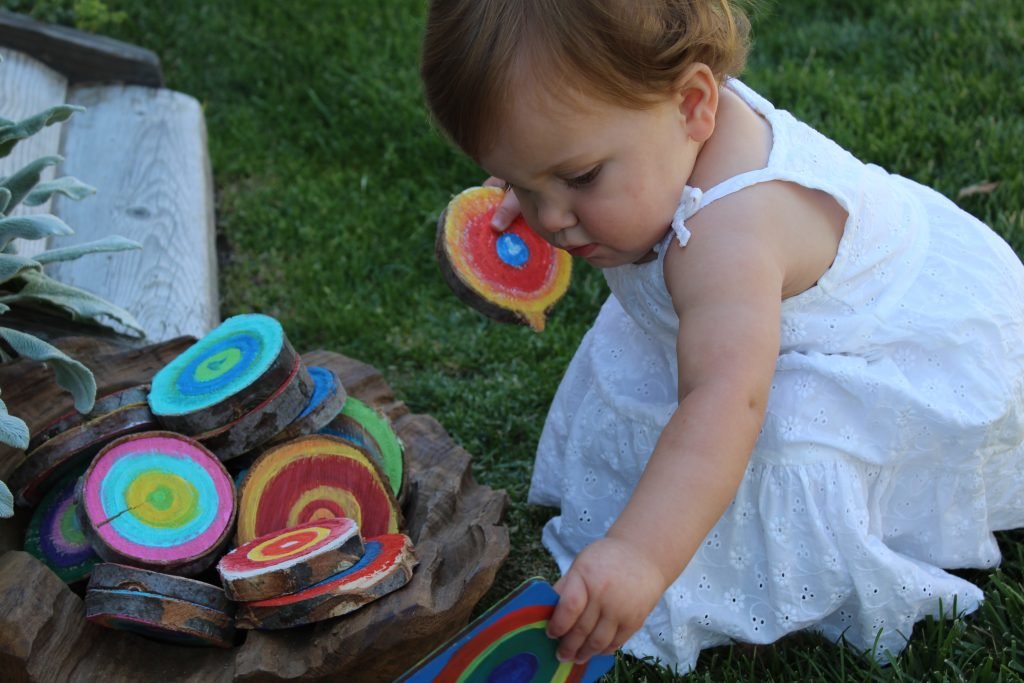
Unscripted materials are critical in toddler play because they allow children to be in control and recognize the power of their bodies and actions. Loose Parts for toddlers actively promote their learning and their need to manipulate the environment, experiment, and interact with materials uniquely. When young children play with Loose Parts, they are in charge of making objects move or roll, which helps them make connections to their abilities and influences on their environment. Renowned infant and toddler educator Magda Gerber states, “The best play objects for babies are those which allow them to be as active and competent as possible at every stage of development” (Gerber, 2013).
Benefits of Loose Parts for Toddlers
Learning and development for young children is an integrated process that includes social-emotional, perceptual-motor, cognitive, and language development as young children actively strive to make sense of their world. Maguire-Fong describes infant and toddler learning as a dynamic system in which everyday experiences influence how the child organizes body and mind (2015). Loose Parts are unscripted materials with opportunities to build life skills, including collaboration, self-knowledge, risk-taking, critical thinking, communication, and decision-making. Loose Parts for toddlers:
1. Fosters Creativity and Imagination
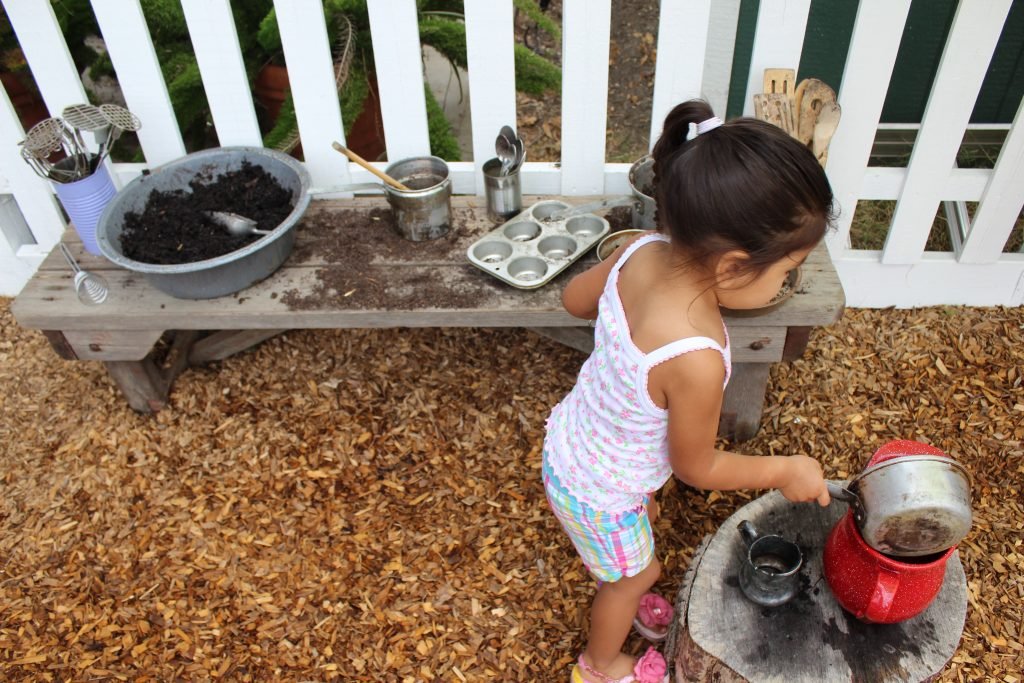
As children grow and interact with the world around them, they are curious and experimental. That is why Loose Parts can be the perfect addition to their play environment. These unscripted materials are not just random bits and bobs but engaging materials that toddlers use in infinite ways. Loose Parts play sparks creativity, ingenuity, and intelligence in young children. It also challenges them to use problem-solving skills to determine the best way to use an object.
Divergent thinking is a powerful skill that allows individuals to generate innovative ideas. This ability is essential when it comes to problem-solving and driving progress. Recent research by Bijvoet–van den Berg and Hoicka (2014) has revealed that even toddlers as young as two years old can think divergently and that this skill develops and strengthens with age.
One of the critical factors in developing divergent thinking is individual learning through self-directed play. Loose Parts for Toddlers are unique and unusual objects that offer endless possibilities for exploration and creativity. They lack structure and script, providing children with unlimited ways to adapt and manipulate them in ways that reflect their imagination and ideas. In doing so, children can experiment, invent, and play, contributing to divergent thinking and unlocking a toddler’s creative and innovative potential.
2. Enhances Physical Development
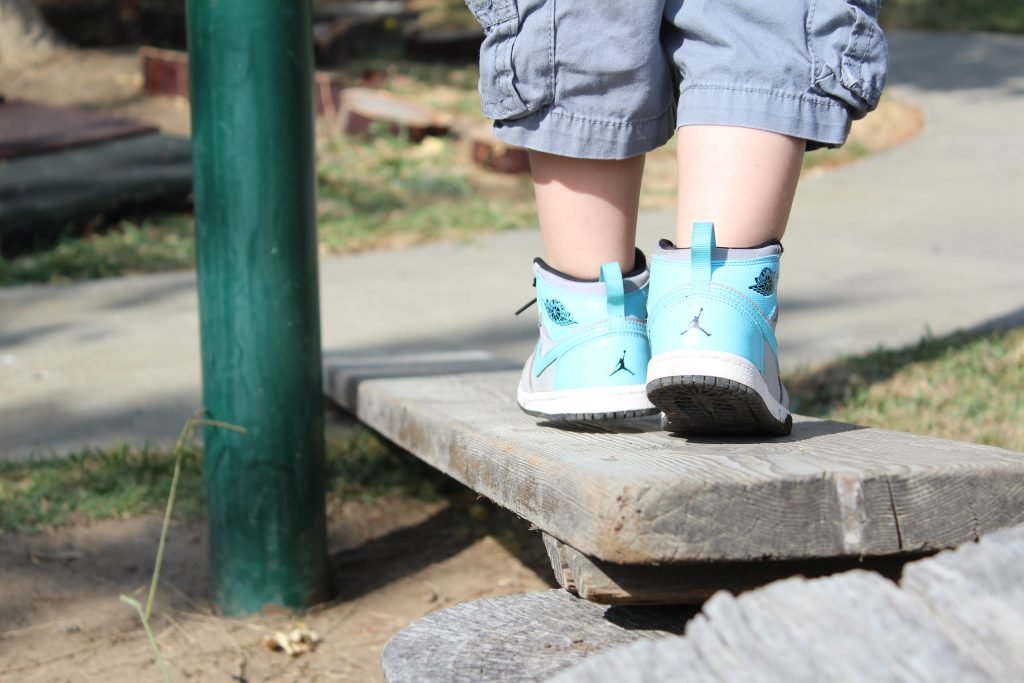
As young children engage with Loose Parts, they continuously investigate and experiment to understand how their world works. They learn about texture by touching scratchy loofah, soft blankets, and smooth plastic bowls. They investigate gravity by rolling a ball down an incline or dropping it up high. Jumping from tree stumps and walking on balance beams created with large Loose Parts increases the toddler’s proprioceptive system.
Play with Loose Parts promotes gross motor skills, fine motor skills, proprioception, and hand-eye coordination. However, that is not all! Exploring and handling Loose Parts like shiny beads, colorful buttons, or tiny shells can be a fun and rewarding experience for toddlers. Not only can these small objects stimulate their senses and imagination, but they can also help develop their fine motor skills. Sorting, stacking, and threading these Loose Parts can train their hands to work with precision and control, improving hand-eye coordination.
3. Develops Cognitive Abilities
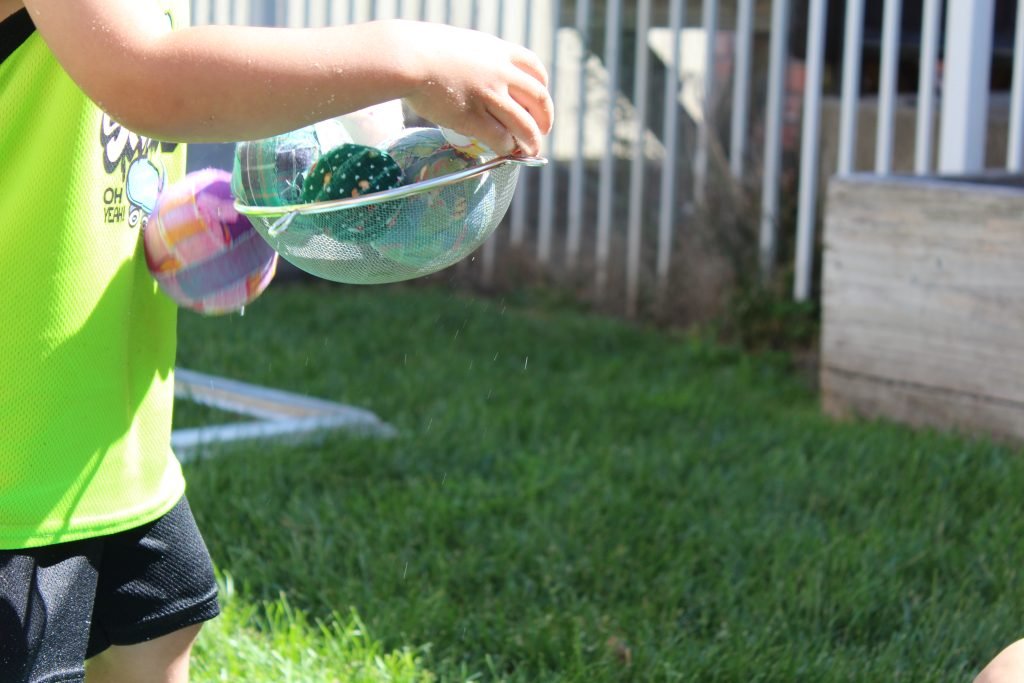
Intellectual, or cognitive, learning includes the abilities of predicting, reasoning, questioning, and analyzing. Intellectual learning occurs through natural interaction with real things in the child’s environment (Katz 2015). Loose Parts are ordinary objects that, when placed intentionally in a toddler’s environment, support their cognitive growth through exciting discoveries. According to Gopnik, Meltzoff, and Kuhl, “Childhood is the time when we learn most and when our brains as well as our minds are most open to new experience. . . . Babies and young children are perpetually exploring and experimenting, testing out new theories and changing old theories when they learn something new” (1999, 189).
We all want to encourage children to grow and learn. One way to support their development is through Loose Parts play. With various materials and objects at their disposal, little ones can make decisions, solve problems, and experiment without fear of failure. This active learning leads to higher-order thinking skills, such as classification, counting, and spatial awareness. The best part is that learning happens naturally, without direct instruction and teaching. By encouraging our children to explore and create with Loose Parts, we are setting them up for success now and in the future.
4. Boosts Language Development
Young children use language to communicate their needs and to direct others. Language can have a cognitive function involving naming, describing, or commenting on objects. As toddlers explore Loose Parts, they use expressive language to name and describe objects. Leonardo says “rock hard,” and Arianna, who wraps up a wooden clothespin with a small piece of burlap, says “baby.” Luis uses the expression “Uh-oh” when his tower of tree blocks falls over. Language can also have an instrumental function, which includes asking, rejecting, and voicing desires. Matthew says “more” as he requests more crates for his structure, and Adam says “me throw” as he expresses his desire to throw a felted ball off the play loft.
Young children’s’ imagination knows no bounds. Toddlers create their own stories while utilizing Loose Parts to bring their imagination to life. The ability to change sound effects during their play enables them to adapt to the ever-changing narrative in their minds. Loose Parts also allow young children to use language to communicate instructions and commentary throughout their play. It reminds us that sometimes, the most powerful tool for a child’s play is their creativity and the limitless world their imaginations can create.
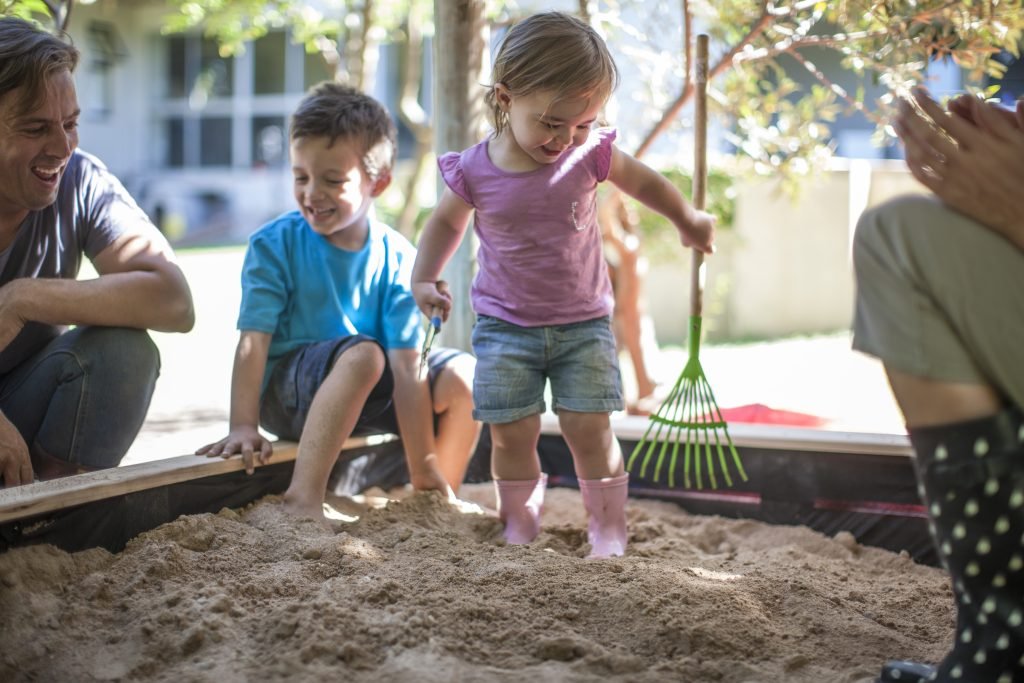
5. Promotes Social Interaction
Social development is a young child’s ability to form and maintain healthy and rewarding relationships with adults and other children. An environment organized with appealing Loose Parts for toddlers is essential in supporting social play in young children. Multiple Loose Parts are engaging and offer choices that help promote socialization in toddlers. Toddlers can be intent on having the same play object that someone else has, especially popular items.
Collections of Loose Parts for toddlers have fascinating characteristics of color, shape, texture, pattern, and design that capture the interest of young children. The active nature of Loose Parts allows toddlers to use objects in limitless ways and share them with others. Rather than competition, collaboration is promoted when children interact with Loose Parts, because there is no right or wrong way to use them. The metal spoons in Janna’s classroom are used in multiple ways.
When toddlers engage in Loose Parts play, magic happens. Suddenly, they are no longer just solitary players but collaborators in a new and exciting adventure. They share materials, negotiate roles, and seamlessly come together to create a project that is uniquely their own. What results is a beautiful display of social skills honed through hours of play.
Cooperation, empathy, and communication are at the forefront of their collaboration as they learn about each other and themselves through this interactive experience. As groups grow and evolve, so do the benefits of Loose Parts play, making it an essential tool in the development of young children. Loose Parts play often evolves into group activities where toddlers share materials, negotiate roles, and collaborate on projects. This collaboration promotes social skills such as cooperation, empathy, and communication.
Safety Considerations for Loose Parts for Toddlers
Loose Parts for toddlers require special considerations when it comes to safety. Because Loose Parts are generally found materials, extra precaution is needed to assess their size, durability, materiality and age appropriateness. Additionally, safety issues change as infants progress into toddlerhood, so educators need to knwo specific safety conners for each age group when selecting which Loose Parts to infuse into the infant toddler ecosystem. For instance, small objects are chocking concerns with infants, while tripping over items and pulling objects on top of oneself are more of a concern for mobile infants and toddlers.
Nothing will prevent childhood accidents better than careful adult supervision. An attentive, responsive adult is essential for keeping young children safe and protecting them from injuries. Adults are responsible for ensuring that Loose Parts placed in the play ecosystem are safe for the younger children who will use them and also for having a watchful eye as the children manipulate the objects. Prevention is key. It is best to foresee and prevent rather than handle an emergency. Experienced teachers, even working one-on-one with a child, will always be alert to the whole classroom.
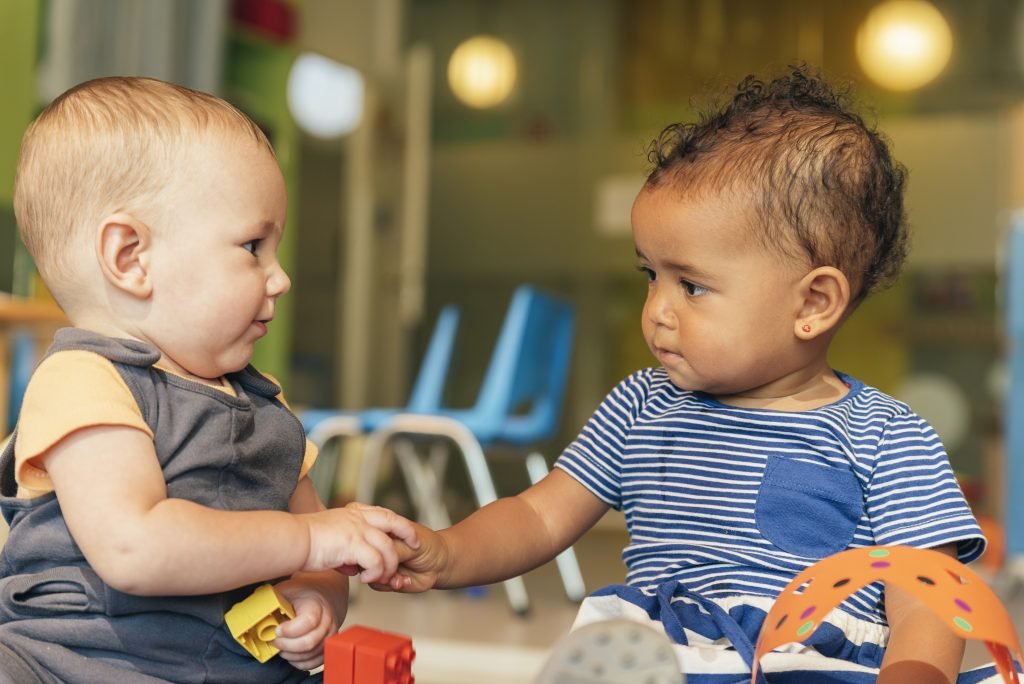
Conclusion
Loose Parts play is a powerful tool in early childhood development, offering endless possibilities for creativity, learning, and growth. By incorporating Loose Parts for toddlers into everyday play, educators and families can provide hours of enriching experiences that lay the foundation for lifelong learning.
I am looking forward to enhancing my collection of Loose Parts to share with my grandbaby and she grows and develops into an inquisitive and playful toddler.
I will keep sharing my experiences and observations. In the meantime, I invite you to read Loose Parts 2: Inspiring Play With Infants and Toddlers and learn more about the power of Loose Parts.
An Invitation to Wonder
